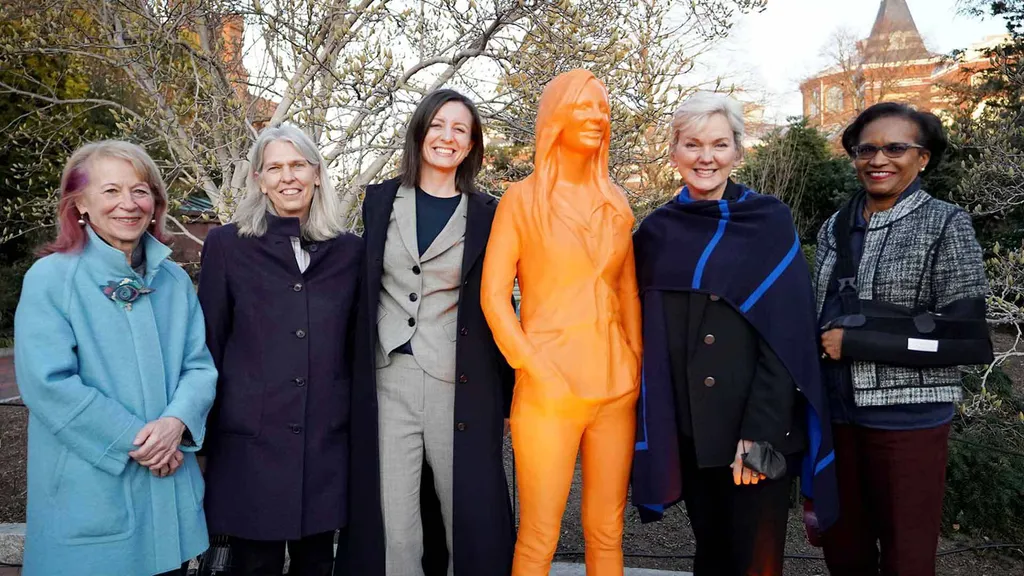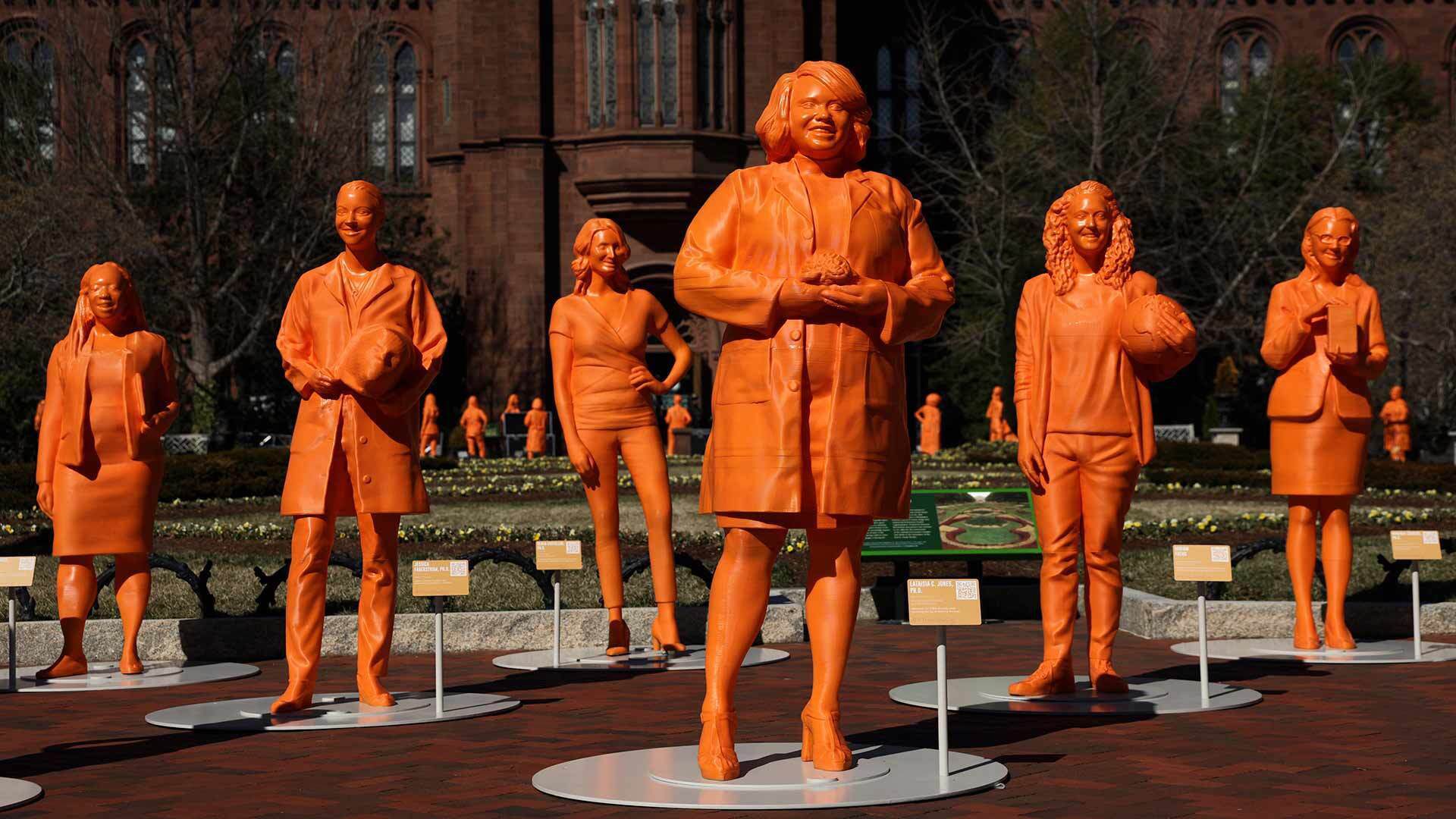- March 16, 2022
- By Sala Levin ’10
Mercedes Taylor came face to face with herself as a life-size statue on the National Mall and thought, “Is that how tall I am?” Somehow, the height was more of a shock than the statue’s neon orange hue.
The assistant professor in UMD’s Department of Chemistry and Biochemistry is one of 120 women in science, technology, engineering and math (STEM) now being honored on the Mall and a number of Smithsonian museums in a temporary showcase. “#IfThenSheCan—The Exhibit,” part of the Smithsonian’s “Women’s Futures Month,” will run through March 27, coinciding with much of Women’s History Month.

Taylor was first selected by the American Association for the Advancement of Science (AAAS) and the science-focused Lyda Hill Philanthropies to be an ambassador for its “If/Then” program focusing on women in STEM, unaware that the experience would result in statuary. Rather, she visited elementary schools and high schools to talk about chemistry and encourage young women to pursue scientific careers.
“One of the reasons many girls don’t pursue careers in STEM is that they don’t see others who look like them when they look for role models,” said Rese Cloyd, director of AAAS’ Center for Public Engagement with Science and Technology. “The AAAS and If/Then ambassadors program … addresses this representation gap.”
While visiting Dallas, the home of Lyda Hill Philanthropies, in 2019, Taylor and the other ambassadors were invited to pose for a scan of their bodies. She stood in the center of a small, cylindrical tent and kept very still as a number of cameras captured her image from all angles.
Those scans were then 3D-printed and turned into the statues scattered across the grounds of the Smithsonian Castle, the Smithsonian Gardens, the Arts and Industries Building, the National Museum of Natural History, and the National Air and Space Museum. Among the 120 women represented—the largest-ever collection of statues of women—are marine biologists, wildfire experts and robotics pioneers. One woman, Cornell University undergraduate Karina Popovich—created more than 82,000 3D-printed masks for health care workers early in the COVID pandemic.
“We are excited to highlight the work of these game-changing STEM innovators and help expand the narrative about who is leading in these fields,” said Rachel Goslins, director of the Smithsonian’s Arts and Industries building, which houses the larger “Futures” exhibit. “These women are changing the world and providing inspiration for the generation that will follow them.”
Earlier this month, Taylor, who researches how to make chemical separations more energy-efficient, visited her statue and talked with passersby about the exhibit and her experience as a woman in STEM. Visitors included U.S. Secretary of Energy Jennifer Granholm.
For Taylor, the (presumably once-in-a-lifetime) experience of being turned into an Instagram-worthy, attention-grabbing, traffic cone-orange statue has been both humbling and invigorating.
“I was bashful about it because … there are a lot of women who are excellent scientists, many more than there are statues on the Mall now,” she said. “You have to think of it like we are representatives of all the women who are doing impressive work.”
